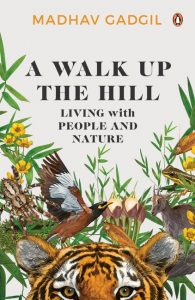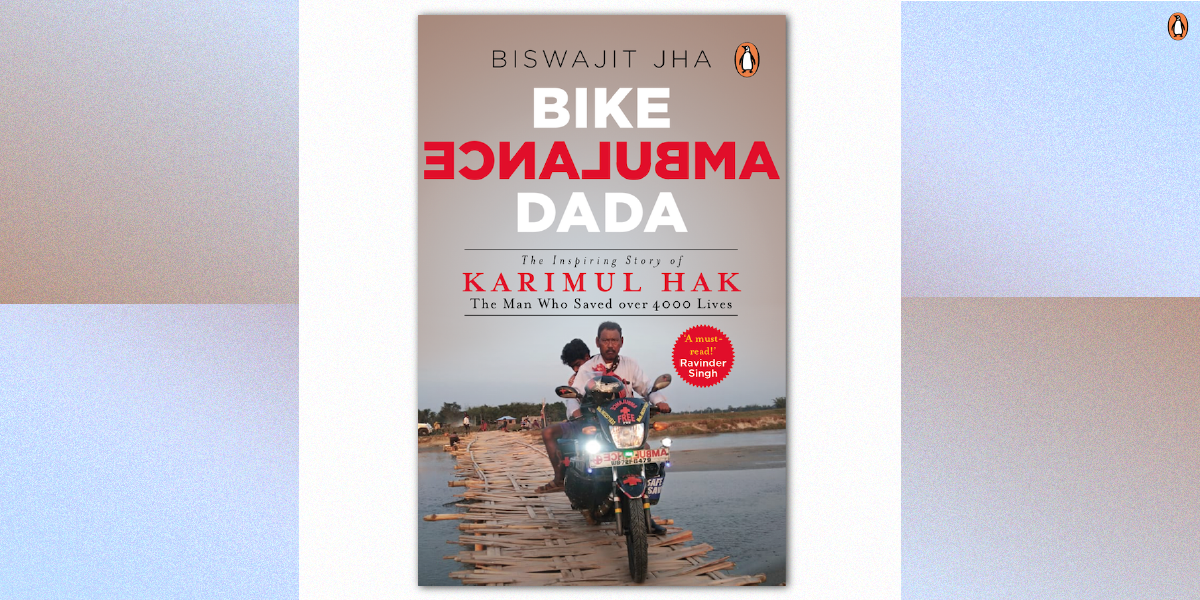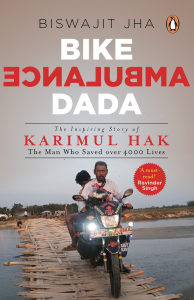Step into the enchanting world of A Walk Up the Hill by Padma Bhushan Awardee Madhav Gadgil. Read this excerpt and journey alongside young Gadgil as he explores Lokmanya Tilak’s bungalow on Sinhagad Hill. From buffalo herders and buffalo keepers to mentorship from Sálim Ali, Gadgil’s experiences mold his passion for ecology and conservation.
Dive into his adventures and passion for understanding the natural world.

Part of Lokmanya Tilak’s bungalow, at the top of Sinhagad, the most famous of Shivaji’s hill forts, was given on rent to people known to the family. Every summer, my parents and I would spend two weeks in the bungalow. There were no roads up the hill at that time and I eagerly looked forward to climbing the steep slopes, to relive the tale of how Tanaji clambered up an impossibly steep rockface by holding on to a rope tied to the tail of Yashawanti, a monitor lizard, to wrest control of the fort from the Mughals. Sinhagad’s slopes were well wooded, and reportedly full of wildlife. We never got to see any large animals, but the plentiful birdlife was fascinating enough. I especially looked forward to two species not to be seen around Pune: the handsome crested bunting and the melodious Malabar whistling thrush.
Three-fourths of the way up the slope was the outer line of defence for the fort in the form of settlements on smaller side plateaus. Here, in a few huts, lived the forest-dwelling buffalo-herders, the Dhangar Gavlis, and the erstwhile military guards, the Kolis. We would enjoy refreshing glasses of buttermilk from the Gavlis and chat with them. Baba and I would walk over to their settlements where we were charmed by the herds of their well-nourished buffaloes with glistening black skins, even more attractive than the two milch buffaloes we owned at home. I thus grew up to be rather different from the usual brand of urban nature lovers, who view the rural people, their farms and livestock as the principal enemies of India’s nature. I, on the other hand, admired the buffaloes as much as the gaur and was equally at home with the farmers and buffalo-keepers as with the scholars of Pune.
* * *
One of the birds I most enjoyed watching was the green bee-eater, which perched in large numbers on the electric wires that ran from the pole on the road to our house. I found their melodious trills and graceful aerial sallies to catch flying insects attractive. I noticed one day that the characteristic single pin feather sticking out of their square-cut tail suddenly went missing for some weeks. I asked Baba if this was another species. We looked up the many bird books in our library but found no answer. ‘Well,’ he said, ‘why don’t you write to Sálim Ali himself?’ I did so, posing this question, and was delighted when three days later I received a letter in his own stylish hand, saying that at certain times of the year, the birds moulted their feathers. At this time, the pin feather would be missing for a few weeks but would grow back after that. Indeed, it did.
Sálim Ali used to visit Pune frequently to pursue his study of baya weaverbirds. I fixed an appointment to meet him on his next visit and was captivated by his knowledge, wit and charm. So, at the age of fourteen, I decided to become a field ecologist like him. Baba was quite happy with my decision. He himself was a field economist and had conducted surveys on various subjects: for example, bus transport and fruit production in western Maharashtra, primary education in Satara district and, importantly, a survey of the wages and living conditions of millworkers of Mumbai. This last study was undertaken at the request of B.R. Ambedkar who was then in charge of labour issues in the Bombay state provincial government. The committee was headed by the state labour commissioner, but Baba shouldered the responsibility for the actual surveys. As a result, he had become a close friend of Dr Ambedkar.
Srushtidnyan was the only Marathi popular science magazine published at that time. Iru Kaku suggested that I write Marathi articles on topics of my interest—ecology and animal behaviour—for the magazine. I was particularly fascinated by the social behaviour of birds, the noisy family groups of babblers and the night-time gathering of crows, mynas and my favourite bee-eaters. I used to travel around Maharashtra for athletic competitions as a member of the Pune team, and one evening in Solapur, we sat on the ground at dusk as the concluding prize distribution ceremony of the athletic meet was in progress. There I witnessed a sight I have never forgotten, of well over a thousand green bee-eaters flying overhead, uttering their musical tring-tring calls as they slowly settled to roost for the night in the clumps of trees surrounding the playground. Between 1956 and 1958, I wrote a series of articles for Srushtidnyan dealing with animal behaviour, kicking off my lifetime hobby of writing popular scientific articles for the general public.
Sálim Ali was forty-six years my senior, and from the time I first met him I remained in constant touch with him, interrupted only by the six years I spent at Harvard University.
* * *
Get your copy of A Walk Up the Hill by Madhav Gadgil wherever books are sold.









